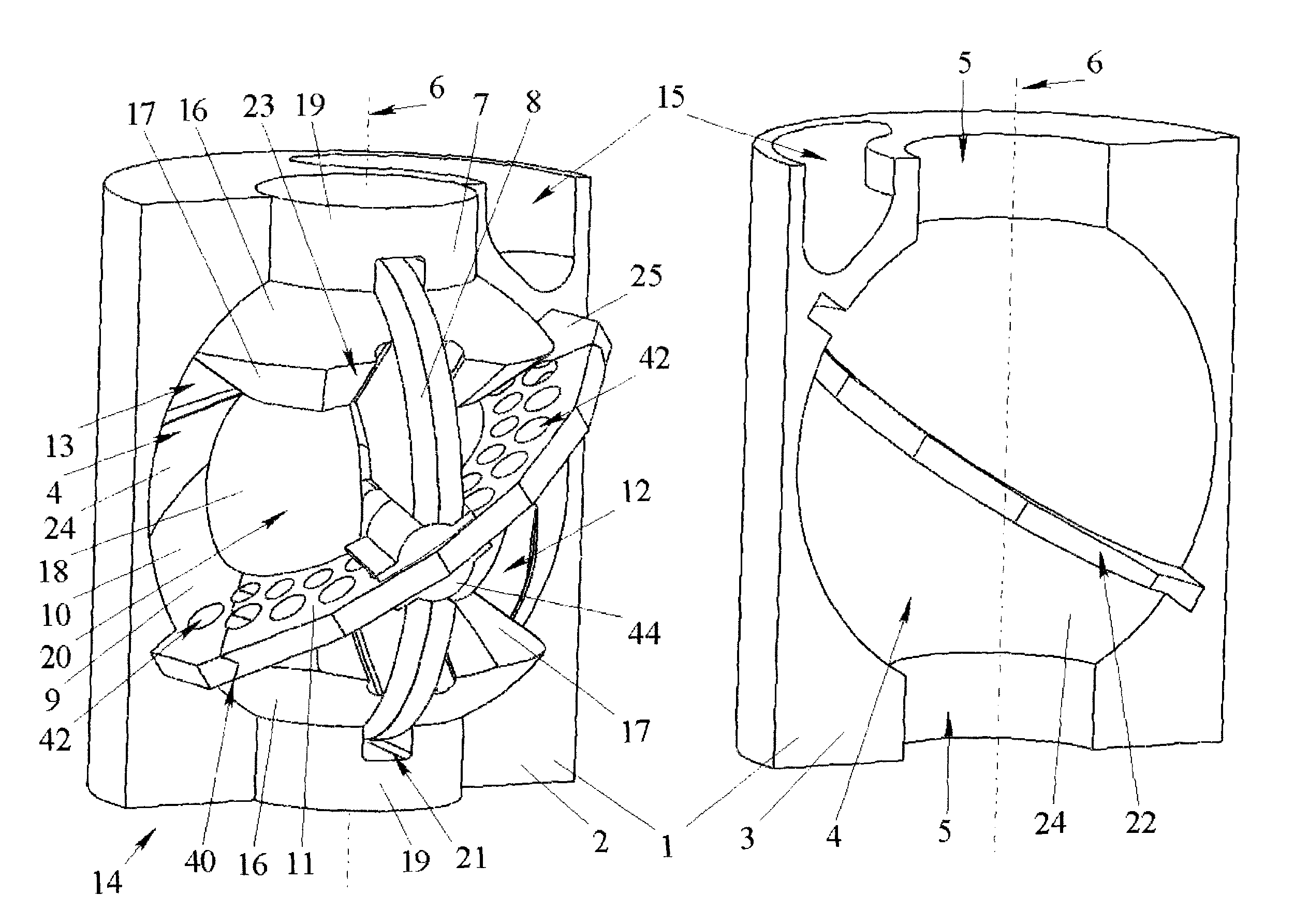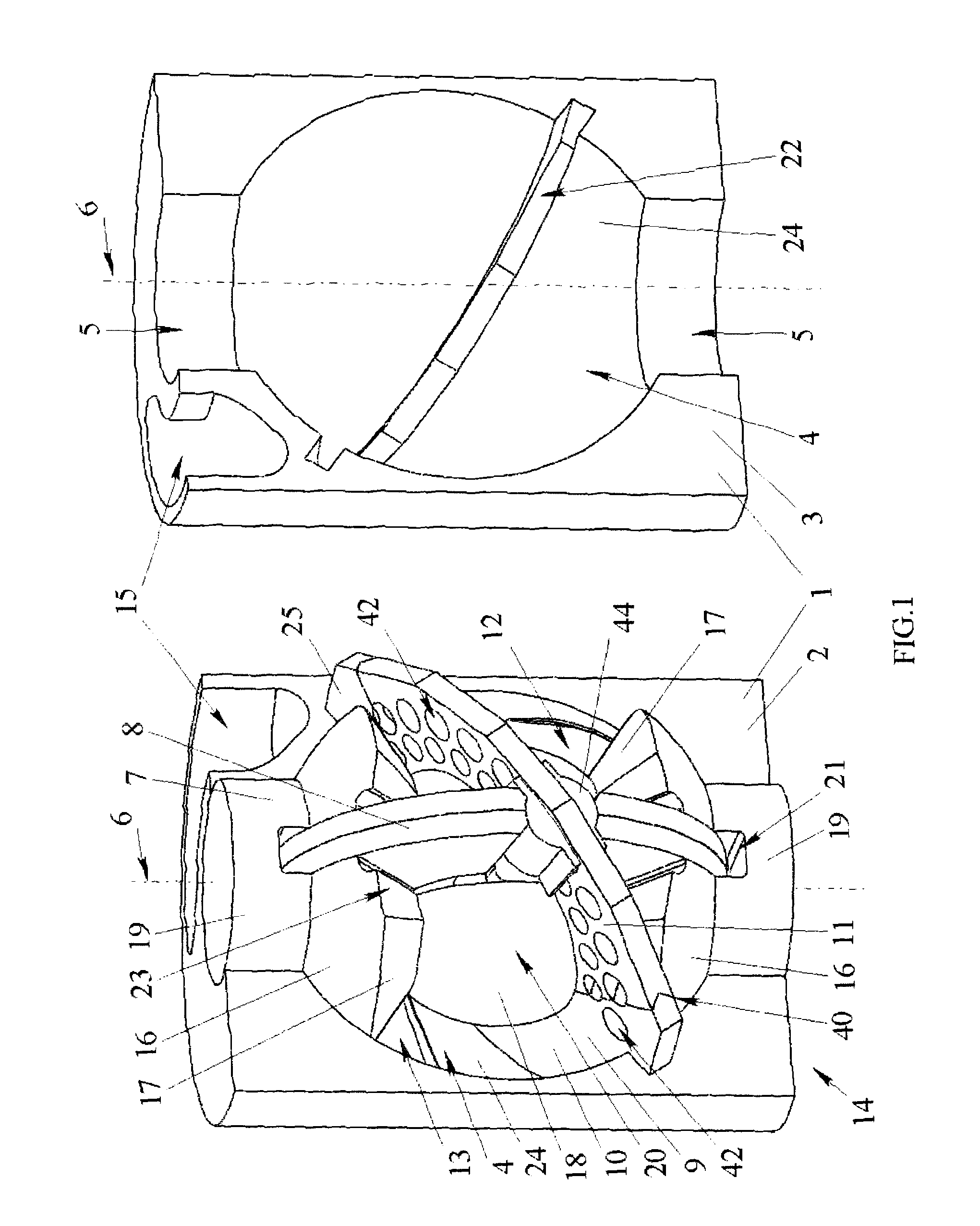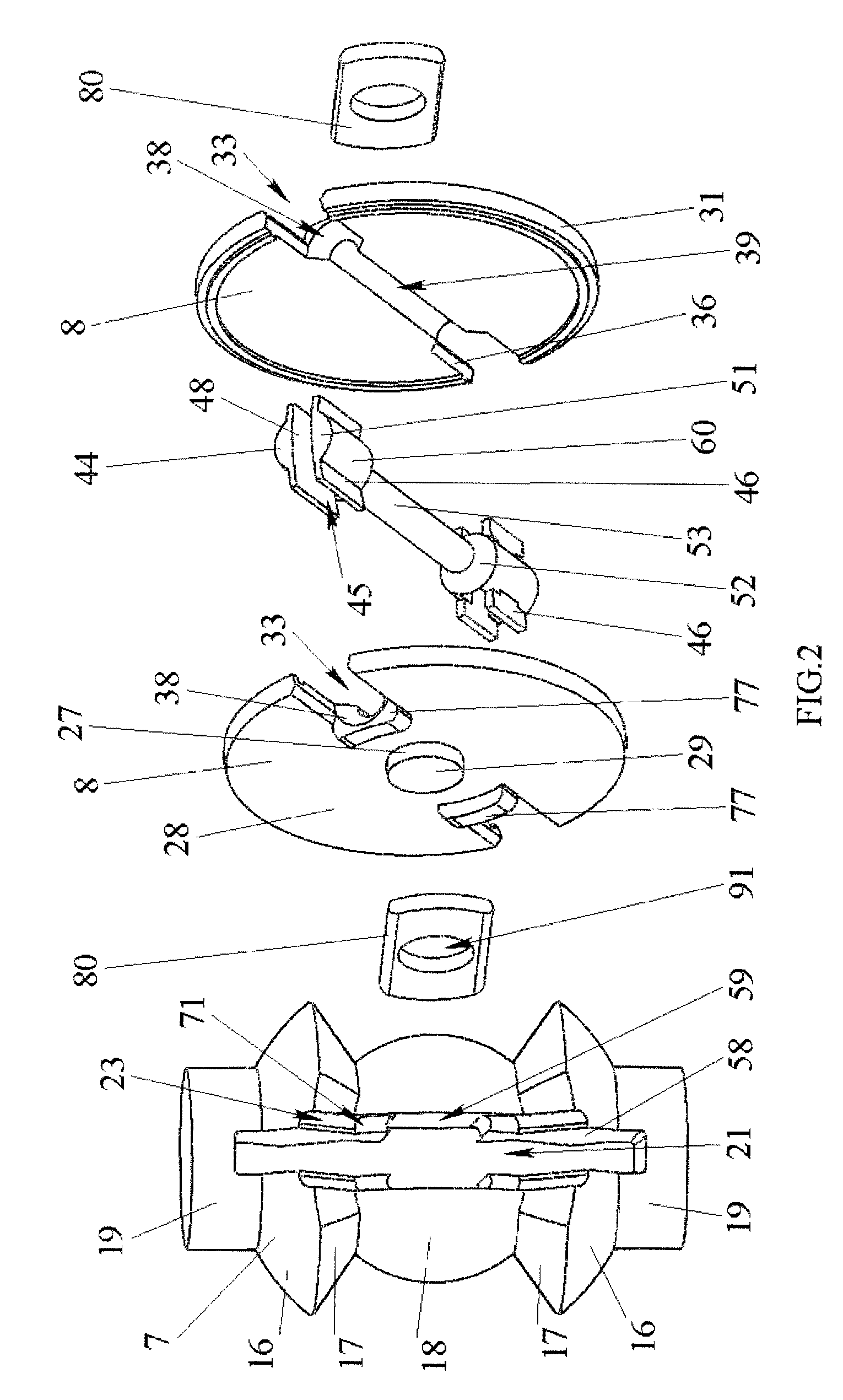Method of operation of a spherical positive displacement rotary machine and devices for carrying out said method
a positive displacement, rotary machine technology, applied in the direction of rotary or oscillating piston engines, rotary piston engines, engine lubrication, etc., can solve problems such as possible jamming, weakening of shafts, and non-uniform flow ra
- Summary
- Abstract
- Description
- Claims
- Application Information
AI Technical Summary
Benefits of technology
Problems solved by technology
Method used
Image
Examples
Embodiment Construction
[0155]A stage (which can be used separately as well) of the positive displacement rotary machine (FIG. 1) is structured as follows. A body 1 (FIG. 1, 13), made of two parts, conventionally called the ascending (bypass) half 2 and the descending (propulsion) half 3, contains a cavity 4 in the form of a segment of a sphere (rather a segment of a torus, which is formed instead of the sphere resulting from tolerances for the rotor axial clearance) with two holes 5, concentric with it. A separator 9 (FIG. 1, 3), made in the form of a washer with the inner spherical hole 41, is mounted in the spherical cavity 4 at an angle to the hole 5 geometrical axis which is the machine geometrical axis 6. By functions, the separator 9 can be conventionally divided into two areas: the ascending (bypass) 10 running upwards at the bypassing of the rotor from right to left, and the descending (propulsion) 11 running downwards at the bypassing of the rotor from right to left. Although for strength, it is ...
PUM
 Login to View More
Login to View More Abstract
Description
Claims
Application Information
 Login to View More
Login to View More - R&D
- Intellectual Property
- Life Sciences
- Materials
- Tech Scout
- Unparalleled Data Quality
- Higher Quality Content
- 60% Fewer Hallucinations
Browse by: Latest US Patents, China's latest patents, Technical Efficacy Thesaurus, Application Domain, Technology Topic, Popular Technical Reports.
© 2025 PatSnap. All rights reserved.Legal|Privacy policy|Modern Slavery Act Transparency Statement|Sitemap|About US| Contact US: help@patsnap.com



